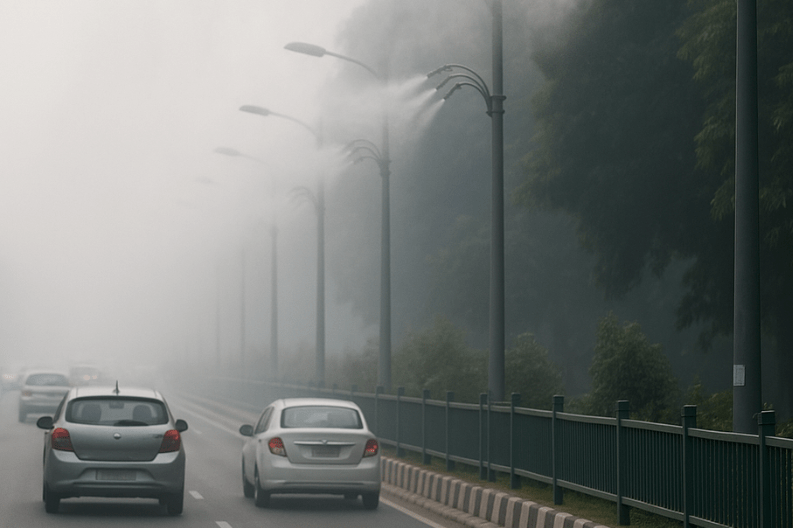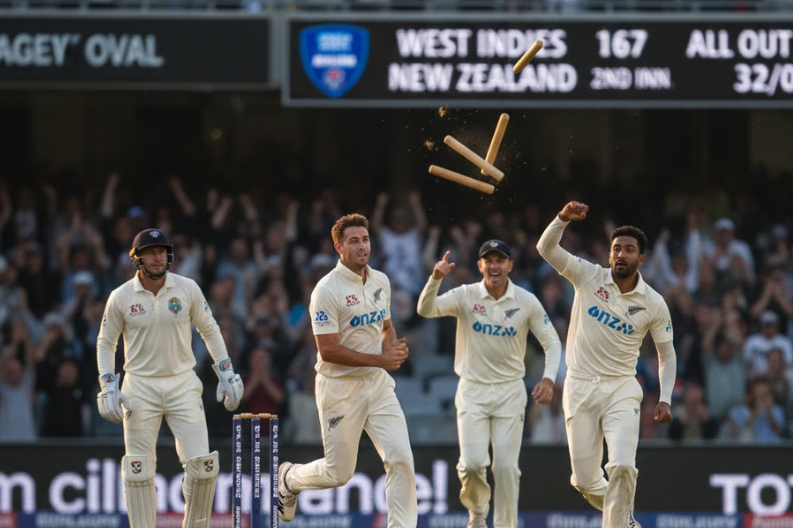Delhi introduces spraying misting system as a new solution to fight rising air pollution during winter. Every year, the city struggles with poor air quality caused by dust, vehicle emissions, and other pollutants. This new technology aims to reduce harmful particles in the air and improve breathing conditions for millions of residents.
The misting project is currently operating on a 7-kilometer stretch of two major roads, numbered 224 and 210. In this area, 166 streetlight poles are fitted with 30 misting nozzles each, positioned five metres above ground to cover a wide radius. These nozzles spray about 2.8 litres of RO-treated water per hour, which helps capture and settle airborne dust and fine pollutants.
Officials launched this initiative after a successful pilot test last November. During that test, they installed nozzles on 14 streetlight poles over a 550-metre stretch in Dwarka. Because of its positive results, authorities decided to expand the project. The current system now runs from Chandanwari Apartments in Sector 10 to Omaxe Mall in Sector 19 and from the Command Tank in Sector 20 to Dwarka Sector 21 Metro Station.
The mist offers several benefits. It settles dust particles lifted by vehicles, reduces dust accumulation on plants and trees, and helps keep roadside environments cleaner. Additionally, three new pump houses maintain a steady water supply for the system. The water is purified through a Reverse Osmosis (RO) process, which reduces Total Dissolved Solids (TDS) from 2000 to 50, improving water quality and making the mist more effective.
An eco-friendly feature of this system is its water reuse approach. The leftover water from the RO process will be used for irrigation, reducing waste and promoting sustainable resource management. This is especially important in urban areas where water scarcity is common.
During the launch, Delhi officials emphasized the need for urgent action on air pollution. Saxena, a senior government representative, said, “Every winter, Delhi faces severe air pollution that affects everyone. The government is taking several steps to tackle this problem, and public cooperation is vital.”
Experts believe this system could serve as a model for other parts of Delhi and nearby regions. Punjab, for instance, faces similar pollution problems during winter due to factors like crop burning and industrial emissions. Cities like Chandigarh and Mohali could adopt similar technology to combat their seasonal air quality issues.
Air pollution remains a complex challenge caused by multiple factors, including construction dust, vehicle emissions, and weather conditions. However, authorities believe combining innovative technologies like misting systems with public awareness campaigns can significantly reduce pollution levels. Citizens can also contribute by planting trees, using public transport, and reducing plastic use.
In conclusion, Delhi introduces spraying misting system marks a significant step toward cleaner air. With technology, improved water management, and community participation, Delhi’s approach could become a blueprint for other cities struggling with winter pollution and help create a healthier environment for all.



